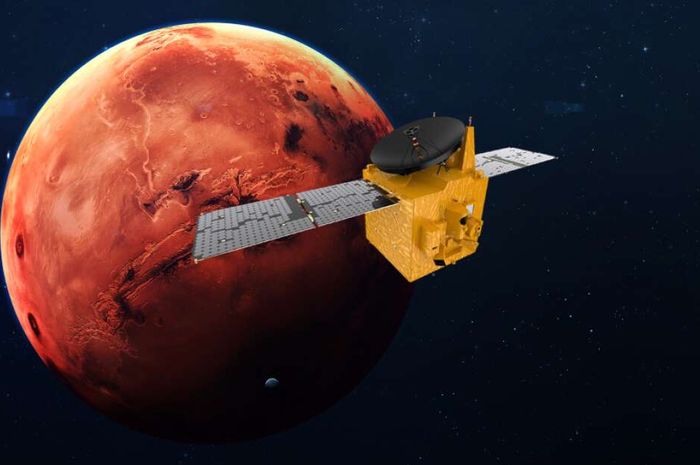The United Arab Emirates (UAE) successfully launched its first space mission to Mars. "Hope" or "Al Amal" in Arabic is now heading for the Red Planet after leaving Tanegashima Space Center, Japan, last Sunday (19/7).
This mission will be a wonderful instrument for understanding the changing atmosphere of Mars. The spacecraft launched is an orbiter, so it will not land on Mars. Instead, this UAE millik spacecraft will track how the nature of the atmosphere is influenced by geological features.
Also Read: Two Satellites Missing After the Chinese Kuaizhou-11 Rocket Failed to Launch
Mars has one of the largest canyons in the Solar System. It also has Olympus Mons, the highest extinct volcano (26 kilometers). The presence of these features can of course affect the Martian atmosphere. And Hope is expected to provide more information about this.
Thanks to Hope, there will be maps of the Martian weather around the clock. This data will then be freely shared with scientists at more than 200 research institutes and universities around the world.
Hope, also known as the Emirates Mars Mission, was developed by Mohammed bin Rashid Space Center in collaboration with the University of Colorado Boulder, Arizona State University and the University of California.
The spacecraft is expected to reach Mars on February 15, 2021. This seven-month journey is the shortest to get there.
Also read: Russia Invites Tourists to Travel to Space in 2023
Hope is not alone on his journey to Mars. This week, on July 23 to be precise, the Tianwen-1 mission from China will also be launched. Tianwen-1 will investigate the potential for life there as well as study the land of Mars. The mission is equipped with radars that can map up to 100 meters (330 feet) below the surface of Mars.
Last but not least is NASA's Mars 2020 mission involving the Perseverance rover and the Martian Helicopter Ingenuity. The launch of Mars 2020 has been delayed several times due to weather, but is now scheduled for July 30.
Both Tianwen-1 and Perseverance are expected to land on the Red Planet in February 2021.

Tidak ada komentar:
Posting Komentar